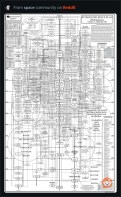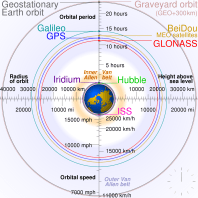
The possibility of a massive asteroid striking Earth and causing catastrophic damage has long captured the public imagination. While the chances of such an event happening in our lifetimes are extremely low, it is a scenario that NASA and other space agencies take very seriously. The Planetary Defense Coordination Office (PDCO) at NASA is tasked with detecting, tracking and characterizing potentially hazardous near-Earth objects that could pose an impact threat. If a so-called “planet-killer” asteroid on a collision course with Earth was discovered, NASA has protocols in place for notifying government officials and the public.
Detecting and Tracking Near-Earth Objects
NASA’s efforts to identify potentially hazardous asteroids and comets begins with detection and tracking. The agency funds several ground-based observatories and the space-based NEOWISE telescope that are constantly scanning the skies for near-Earth objects (NEOs). Once a new NEO is discovered, follow-up observations are made to refine the object’s orbit and determine if it poses any risk of impacting Earth.
Over 90% of the largest NEOs, those 1 kilometer or wider, have already been discovered. These are the true “planet-killers” that could cause global devastation if they hit Earth. NASA is now focused on finding at least 90% of NEOs larger than 140 meters across, as these could still cause significant regional damage. To date, approximately 40% of the estimated population of these mid-sized NEOs have been found.
If an asteroid is determined to have even a tiny chance of impacting Earth within the next 50 years, it is continually monitored by NASA’s Center for Near-Earth Object Studies (CNEOS). The PDCO also notifies various government agencies and international partners, although not yet the general public at this stage. As more observations are made over time, the impact probability is refined. In most cases, the asteroid will be ruled out as an impact threat as the orbit is better characterized.
Notifying Government Officials
If continued observations show that an asteroid has at least a 1% chance of impacting Earth, NASA will issue notification messages to the White House, Congress, and other federal agencies. At this point, the asteroid is considered a serious threat. The PDCO will provide detailed briefings to government leaders on the characteristics of the asteroid, the potential damage it could cause, and the timeline and probability of impact.
Depending on the size of the asteroid and the lead time before a potential impact, different agencies would be involved in planning a response. The Federal Emergency Management Agency (FEMA) would coordinate disaster preparedness and develop emergency response plans with state and local governments for the affected areas. If the asteroid is very large and the impact is still many years away, government leaders may also consider funding the development of a space mission to deflect the asteroid.
Throughout this process, NASA will provide regular updates to the involved government agencies as new information about the asteroid becomes available. The PDCO acts as the central coordinating hub for all asteroid impact threat related efforts across the government.
Informing the Public
NASA will work with the White House and other agencies to decide when and how to inform the general public about an asteroid that poses a significant impact threat. There is no set threshold for when this notification would happen, as it depends on the specific circumstances of the threat.
Most likely, if an asteroid is confirmed to have a high probability of impacting Earth and causing major damage, a public announcement would be made quickly. NASA and the White House would hold a joint press conference to share the information in a clear, accurate and non-sensationalized manner. The announcement would explain what is known about the asteroid, when it is predicted to impact, and what regions are at risk. It would also detail what actions the government is taking to prepare and whether any evacuations will be necessary.
After the initial announcement, NASA would continue to provide updates to the public and media as new information is learned about the asteroid. The PDCO would make extensive use of NASA’s public outreach channels including the nasa.gov website, social media accounts, and the Planetary Defense website. The @AsteroidWatch X account would issue frequent updates.
NASA may also decide to inform the public about a potential impact threat in some high-risk cases, even if the probability is less than 1%. This could happen if the asteroid is very large and the impact window is relatively soon, for example. The decision to make an announcement would be carefully considered, balancing the need for transparency with the risk of causing unnecessary panic.
International Coordination
Asteroid impact threats are a global concern, so NASA works closely with international partners to detect and track potentially hazardous NEOs. The International Asteroid Warning Network (IAWN) is a United Nations endorsed organization that fosters collaboration between the many space agencies and scientific institutions worldwide involved in planetary defense. If an asteroid on an Earth-impacting trajectory was discovered, NASA would work through IAWN to ensure all partners are informed and involved in the response.
The Space Missions Planning Advisory Group (SMPAG) is another UN-endorsed forum where space agencies discuss technologies and missions to deflect asteroids. If a serious impact threat arose, SMPAG would help coordinate the planning of any international deflection attempt. Launching spacecraft to nudge an asteroid off course many years before a predicted impact is currently the most mature approach for mitigating the largest threats.
Preparing for Impact
If an asteroid impact cannot be prevented, NASA and its partners will focus on preparing to manage the consequences. Accurate predictions of where and when the asteroid will strike are crucial for effective emergency response planning. NASA would work with FEMA and local authorities to model the damage from an impact, accounting for the asteroid’s size, composition, speed and entry angle. This would inform decisions on whether to evacuate the predicted impact zones.
Fortunately, even for large asteroids, the area of devastation is typically regional rather than global in scale. With enough warning time, people could be evacuated from the highest risk areas. Shelters would be set up and emergency supplies pre-positioned outside the impact zone.
NASA would also work to dispel any false information or rumors circulating about the asteroid. Clear and frequent communication from official sources is important to maintain public trust and cooperation with emergency instructions. NASA’s scientific experts would be made available to explain the latest asteroid observations and impact predictions to the media.
The Aftermath
In the event the unthinkable happened and a large asteroid struck Earth, NASA would continue to play a key role in the aftermath. The agency would use its Earth observation satellites to assess the extent of the damage and help direct relief efforts to the hardest hit areas. NASA’s scientific analysis of the impact could also inform the response, such as whether the strike might have triggered earthquakes, wildfires or a tsunami.
As the world recovered, NASA would also lead the scientific investigation into the impact. Studying the aftermath would yield valuable data to help refine asteroid impact prediction models and improve preparedness for future threats. Samples collected from the impact crater and ejected debris could provide a rare opportunity to learn about the composition and internal structure of asteroids.
Constant Vigilance
While the odds of a planet-killer asteroid striking Earth in our lifetimes are very small, the devastating consequences mean the threat must be taken seriously. NASA’s Planetary Defense Coordination Office is working constantly behind the scenes to detect and track potentially hazardous asteroids. If a threat was discovered, NASA has well-established protocols for notifying government leaders and the public.
Still, there is much more work to be done to protect Earth in the future. NASA is developing new space-based telescopes like NEO Surveyor to accelerate the search for mid-sized asteroids. The DART mission successfully demonstrated the kinetic impact deflection technique on a small asteroid, but more research is needed on how to address larger threats. Improving international cooperation on planetary defense is also a priority.
Most importantly, NASA maintains open communication with the public about the latest asteroid science and the real risks posed by NEOs. The agency will continue to be a trusted source of information on impact threats that everyone can rely on, in the unlikely event a planet-killer asteroid is ever discovered.






